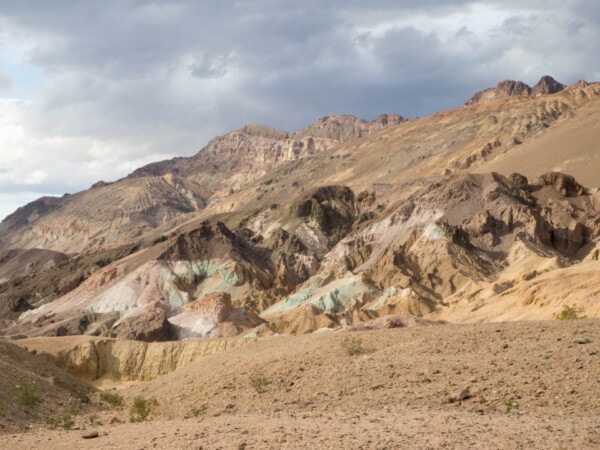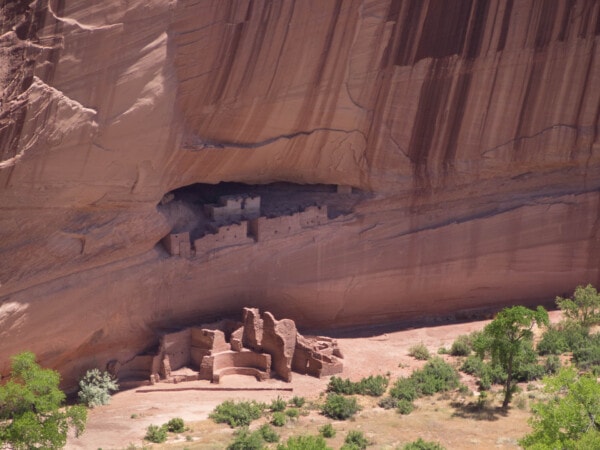We didn’t know we’d be going to the “Most Improbable Village in Oman.”
After camping for several nights in Hannibal, the name we gave to the rooftop tent on the Land Cruiser we’d rented, our plan was to drive up to the Sayq Plateau and luxuriate for two nights at the Sahab Hotel (A real bed! A hot shower!) and hike the “Rose Walk Between Four Villages.”
It was Fenny at the Sahab Hotel who told us about As Sawjhar, the Omani village where people still live in caves.
Fenny had come to work at the Sahab when it opened in 2011 in Jebel Akhdar, the ‘Green Mountain’ of Oman. It’s easy to see why Oman designated this area for tourism development, why it attracts people from all over the world, like Fenny, who came from China. At an elevation of more than 2000 metres, the air on the Sayq Plateau is cool, views stretch across green terraced fields to the Ophiolite mountains and ancient villages dot the landscape.
Building one of the best-engineered roads we’ve ever driven on is what the Omani government did to improve access to the area. To drive it, you must first clear a military police checkpoint and unless you’re driving a 4×4, you’ll be turned back.


Then it’s a lean-in, well-banked steep climb, thrilling, but we were glad to reach the Sayq Plateau and the Sahab Hotel.

Fenny, in her black pantsuit, checked us in, serving us dates and coffee—Arabic coffee infused with cardamom seeds, strained and embellished with a teaspoon of rosewater. (We make it in the summertime and serve it cold, adding a little milk.) In her perfect English, she asked us about our interests. When she heard Magellan wasn’t fazed by driving on gravel mountain roads, Fenny suggested we visit As Sawjhar.

“People there still live in caves. Until 2005, there wasn’t even a road up there,” she explained. “Before that they had their supplies flown in by helicopter.”
We were intrigued. But she had no map of that area and besides, I was looking forward to our village-to-village hike perfumed by roses.
The next day after that hike (we’ll tell you about it another time), we were finishing lunch on the hotel’s terrace when Fenny came rushing over.
“We just received this new map,” she said unfolding it on the table. “See, here’s where you turn off and take the new road up to As Sawjrah. (It’s pronounced So-jura.) If the mayor of the village is there, he’ll give you a tour.”
What else were we going to do that afternoon? Besides, we felt like we’d be letting Fenny down if we didn’t go.
The boys at the village of Shanut, just before the road to As Sawjrah, waved us down for a chat.

As the map indicated, after Shanut the gravel road has a “steep gradient” with a dizzying lot of switchbacks as you climb toward the cliffhanger village of As Sawjrah.

We parked across the gorge from the village and began descending on stone steps to the bottom of the wadi, then up the other side to the village. It’s so precipitous that the villagers have installed a small cable-car system to transfer their provisions.

The air was hot and still as a whisper. No one was around.
We opened a gate and entered, walking a pathway so narrow that we could touch homes on both sides. A quiet calm possessed the village, silent as stone.

Another gate, this one locked, prevented us from venturing very far. An Arabic sign with a name and telephone number probably indicated who to call for access permission. We didn’t call. Somehow, it felt intrusive to even think of doing so.

Looking across the gorge, we could see terraced gardens of pomegranate trees and above us in the distance, the faint blur of cave dwellings. In the desert light of late afternoon, we retraced our steps on ancient stones back to the Land Cruiser.


This week Magellan found an article indicating that a dozen years ago, Oman recognized that ecotourists want to “maximise contrast to their everyday life.” As Sawjarah, because many of its inhabitants wanted to move across the wadi to more comfortable homes and better access, was chosen as a model case for a “cautious but rigorous transformation of a traditional agro-pastoral mountain oasis into a cultural heritage site and ecotourism destination.” This included “preservation of its historic external and internal building structures, irrigation canals, the lush garden terraces and goat herds… an interesting alternative to the country’s sprawling tourist industry, which emphasises major infrastructural investments to increase visitor convenience rather than combining their education with the sustainable preservation of a unique cultural heritage.”
Now we’ve discovered, you can stay in a cliff dwelling.
Me: When did the Cliff Guest House open?
Reply: Good morning
The cliff guest house it opens Full days of the week
U can choose anytime to stay in my place
Thanks for choosing us
MohammedMe: What year did you open?
Mohammed: Before 2 years
Me: We were there four years ago in March, before you opened. May I use photos of your place in our blog and encourage people to go stay there?
Mohammed: Of course you can!
Improbable that at our age we’ll return to Oman and stay in a cave house—but we expect many tourists will—maybe you?
Navigation
Buerkert, Andreas; Luedeling, Eike; Dickhoefer Uta; Lohrer, Knut. “Prospects of mountain ecotourism in Oman: the example of As Sawjarah on Al Jabal al Akhdar.” Journal of Ecotourism. 2010.
Here you can read more about The Cliff Guest House, which can be booked directly with Mohammed.
Grist, Mark. Oman Off-Road. Dubai: Explorer Group Ltd., 2006. Here’s what our guidebook says As Sawjhar (although we had overlooked it when planning our trip.) “Chalk one up for the ‘way out there’ category! Just when you feel the road is about to drop off the edge of the Sayq Plateau, it takes a switchback and heads towards the cliffhanger village of As Sawjhar…(it) would definitely be a contender if there were a ‘most improbable village in Oman’ contest.’”
When we stayed at the Sahab Hotel, it had twenty-seven rooms. Now, it’s being rebranded as a resort with a soft opening scheduled soon. I hope they’ve kept the garden with its indigenous Omani plants and 270 million-year-old fossil specimens.
The two aerial map photos are from Google Earth.










8 Responses
I and seven other brits built the original road from birket al mawz to saiq with skilled omani & asian labour back in 78 I went back 2019 thechange was amazing
Linking switchback after switchback to climb that plateau is an engineering marvel in design and construction. Well done!
A queasy traveller would label this a “Puke Road”! It probably wasn’t paved and protected with railings until after 2000?
Looks amazing, you find the best spots!
I just wish we’d been smarter and called ahead to reserve a village tour. It would have been great to talk to the people in this village.
I did not enjoy driving those switchbacks!
Yeah, but you did it in a sandstorm! It’s a lot easier without the wind and with good visibility.
Although the climate is almost totally opposite the road is reminiscent of “The Hill” that drops into Bella Coola, west of Williams Lake BC. I. Believe it’s about 5000 ft and grades up to 14% with multiple switch backs and no guard rails at all. Spectacular mountain vistas of coast mountains.
An interesting drive as well.
The Big Hill into Bella Coola is definitely on my bucket list. In the 1950s, after the BC government refused to extend Highway 20 beyond Anahim Lake, saying it was too costly to build the road out to the Bella Coola Valley, the local residents volunteered cat skinners and blasting teams to build it themselves! Government engineers had said it couldn’t be done.
Even now some tourists after driving down the Hill abandon their rental vehicles in Bella Coola, taking a plane or ferry out, rather than drive back up the Hill.